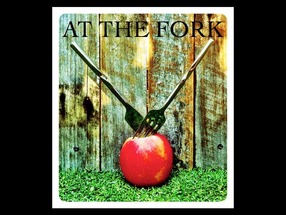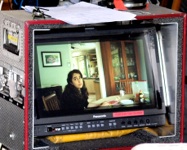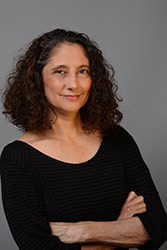Cutting a web series offers editors some interesting challenges in shaping audience experience - I look at a few of these in this post.

Last year I cut a web series called "At The Fork" and found it really interesting from the point of view of structure. Although the episodes are short – 2-3 minutes each, and the series is only 7 eps (the total screen time will end up being about 21 minutes) it is nothing like cutting a short film. A short film has one major story arc that opens, develops and closes inside a single experience. This one has seven mini arcs, each could stand alone, but they will be much better, like a tv series, when seen altogether, because there is a series arc that is only delivered by seeing them all.
One thing I’ve learned from handling this structure is how important it is for every scene to have a dramatic question. This is something that also applies in short films. In longer form you can maybe get away with scenes that don’t have anything at stake or don’t shift the power relationships or don’t advance the actions, they are just nice to look at. But in short form, these scenes will tend to kill the energy of the whole because they take up so much more time, proportionally. In webseries, if an ep (drama or doc, though not necessarily stand up comedy) doesn’t have a dramatic question that opens, develops, closes and points to another question for the characters, then it may well kill the whole series. The eps are too short for moments that are just nice to look at, and each one has to compel the viewer to the next.
This doesn’t mean it feels similar to cutting episodic TV. Though I don’t have experience of this (and would love to hear from editors who do) I can imagine there are a lot of differences – story line complexity, character development within an ep, multiple plot lines. This is not to say a web series couldn’t have these, but the one I cut only has one plot line, the characters progress within their relationships in each ep, so the story line is not complex. It doesn’t operate the way a short film does, but it does feel more like a series of short films than a series of scenes within one story.
This doesn’t mean it feels similar to cutting episodic TV. Though I don’t have experience of this (and would love to hear from editors who do) I can imagine there are a lot of differences – story line complexity, character development within an ep, multiple plot lines. This is not to say a web series couldn’t have these, but the one I cut only has one plot line, the characters progress within their relationships in each ep, so the story line is not complex. It doesn’t operate the way a short film does, but it does feel more like a series of short films than a series of scenes within one story.

One thing that is clearly different between a webseries and a TV show is that viewers take charge of time on the web in a different way than they do when they watch TV. In a TV ep, the editor takes charge of the rhythm of the experience, including the pacing and timing of development from one scene to the next, and their proportional balance in relation to each other. The network, of course, controls the time limits of the whole and the ad break structure. But Webisodes don’t have either of these controls. Viewers decide if and when to get the next piece in the arc, they might decide to go out of order, which changes the arc in interesting ways! Also, there is no time limit at all.
There are attention limits, but this doesn’t mean all episodes have to be short, it just means they all have to be good.
There are attention limits, but this doesn’t mean all episodes have to be short, it just means they all have to be good.
One of the reasons I’m interested in the difference between cutting webisodes and other forms is that some of my colleagues and I have started thinking that getting students to make web-series might give them a better calling card than short films. Web-series show that students can sustain a story over multiple eps, which might help them get work in television more readily. Even more importantly, a web-series communicates directly with its audience – no gatekeepers, so it makes students more audience focused instead of funding body focused or festival focused. Also, web-series give its creators direct feedback from their audiences – through social media or through statistics – audiences only click on the next one if they are compelled to by the first one!
“Convergence” is a huge question mark for industry right now, and there are plenty of signs that the distinctions between online and TV are collapsing. We get and watch TV digitally. Aggregators like YouTube and Blip-TV make channels, commission work with high production values, and sell ads. Ads might clearly be labeled ads, or they might be branded content. The models are shifting and potentially giving rise to new forms, certainly new structures of story telling. This is, by my estimation, the biggest opportunity for developing the craft of editing since the rise of music videos in the 1980s.
The questions for editors are not just about craft, but will of course also be about industry. Employment for editors could increase as this form becomes more professional. As my colleague Mike Jones writes “In the age of the internet a whole range of institutions have become 'broadcasters' and 'post production houses' that in the past would not have been so - museums, galleries, arts institutions etc. are now much more likely to have a team of editors in-house working on web-series, episodic productions all year round as well as often producing traditional Broadcast TVCs.” My own view is that, like the Borg technology on Star Trek, ‘resistance is futile’ so a pro-active stance that embraces the opportunities and guides them toward best practice is a better one for the guild to take than one which tries to stop the tidal wave.
“Convergence” is a huge question mark for industry right now, and there are plenty of signs that the distinctions between online and TV are collapsing. We get and watch TV digitally. Aggregators like YouTube and Blip-TV make channels, commission work with high production values, and sell ads. Ads might clearly be labeled ads, or they might be branded content. The models are shifting and potentially giving rise to new forms, certainly new structures of story telling. This is, by my estimation, the biggest opportunity for developing the craft of editing since the rise of music videos in the 1980s.
The questions for editors are not just about craft, but will of course also be about industry. Employment for editors could increase as this form becomes more professional. As my colleague Mike Jones writes “In the age of the internet a whole range of institutions have become 'broadcasters' and 'post production houses' that in the past would not have been so - museums, galleries, arts institutions etc. are now much more likely to have a team of editors in-house working on web-series, episodic productions all year round as well as often producing traditional Broadcast TVCs.” My own view is that, like the Borg technology on Star Trek, ‘resistance is futile’ so a pro-active stance that embraces the opportunities and guides them toward best practice is a better one for the guild to take than one which tries to stop the tidal wave.

 RSS Feed
RSS Feed

